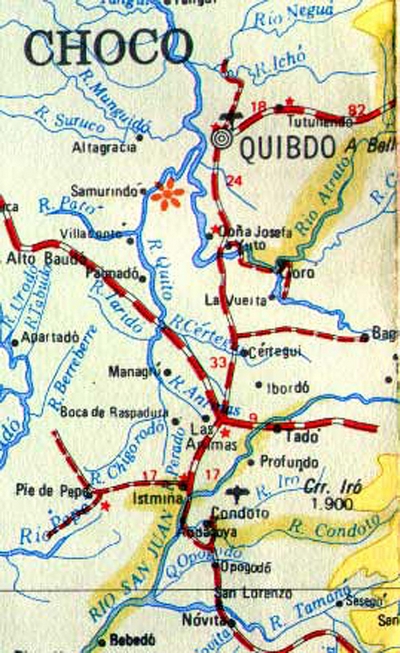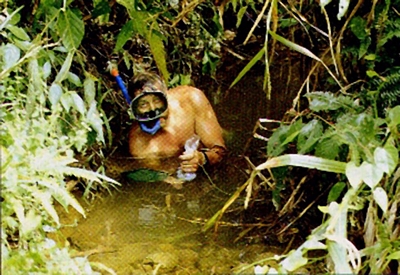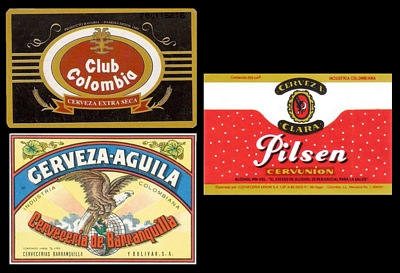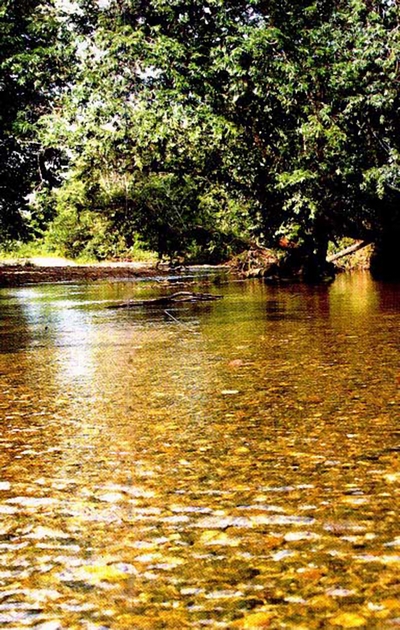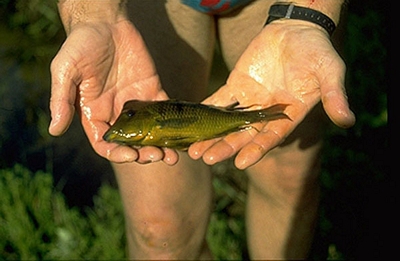Collecting in South America
|
Well, I have had some requests to write about my collecting trips. So I will start with a place in Colombia, in the province Choco. I have been out there three times and I am also thinking of going back for a fourth time too. So Choco will be a mix from my trips in 1989, 1991 and 1993.
It's a wonderful place, but not for the tourist. It's a very poor part of the country, but the people are happy and friendly, at least they have been that way toward me and my travelling companions.
In my articles I will try to give you all the information I have from my trips, like where we stayed, how we got there, where we collected and what kind of fish we collected. And of course the information about the collecting spot and water.
|
So let's go to Choco! |
|
Map of part of Choco. |
CHOCO:
The province of Choco has the border toward Panama and even some part of it goes up on the east coast of Panama. The part of the map shown is of those parts that I have visited in Choco.
The first time I went out to Choco I hired a car in Bogota, and if you want to do the same, then get a 4x4 Jeep. That's the only type of car that you can use out there.
One of several miltary checkpoints on our way to Choco. |
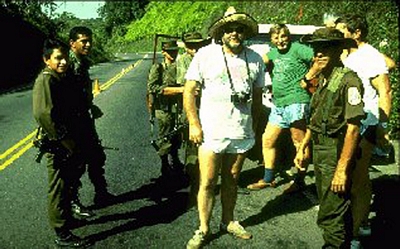 |
As soon as you have passed the Rio Cauca and start climbing up in the mountains toward the small city of Bolivar, you will find out, that the Jeep was the right car. We took three days to get out to Quibdo in Choco. But, we did not go straight out there, there were too many rivers we wanted to look into before we got that far. But, Bolivar had a rather nice hotel and we stayed the night there.
The name of the hotel was Hosteria Parque El Centenario and we paid 2500 pesos for a double room, its about dollar US$3.50. From Bolivar to Quibdo it's around 120 kilometers, and it's a day's drive. So fill up the tank and again you will bless the jeep, because the road is a stone/dust road and you won't be able to drive faster than about 10-15 kilometers per hour.
I will recommend that you drive in the daytime, so start early from Bolivar. You will probably drive into at least three or four military checkpoints. Be happy and smile, and if you can speak Spanish, no problemas.
In a small town you have to drive through, called El Siete, there was a place to stay at night. But last time I drove through, it had burned down. But it might have been rebuilt again. When you are driving through, there is a small bakery on your right side, just after passing the military checkpoint. I think it's still there. Then there is nothing before you come to a small place where there is a "Restaurant", and the owner also has a small shop. If you have had nothing to eat since the morning in Bolivar, this is the place. The buses going from Quibdo to Medellin usually make a stop here.
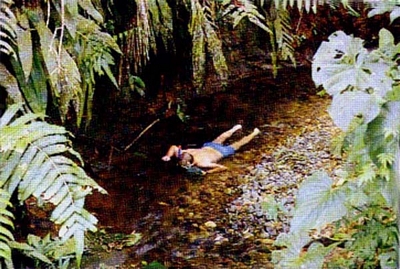 |
My favorite position in a small stream before Tutunendo. |
Then there is nothing before you reach a small town called Tutunendo, again a military checkpoint. Just say that you are a tourist if you don't want to explain that you are going to study the small fish in the rivers. If you have already collected fish in some of the small rivers you have passed, then try to explain why you have small living fish in little plastic bags.
Okay, after this last checkpoint there is nothing before Quibdo, and then you will be looking for a hotel. One hotel is Cristo Rey, and if they are finished redecorating (they were not finished in 1993) then the Hotel Citara is best. In Hotel Cristo Rey I thought they had sand in the mattress, but if you like to sleep on a mattress like this, you are welcome. I did.
After a night's sleep, we wanted to drive down to Istmina. There is only one road, so just keep going straight and after about four hours driving you will end up in Istmina. But, you don't drive straight down. There are rivers and streams that need to be checked out before you get there.
The first river you will cross is Rio Tanando, we did not stop there. If I recall the river correctly, it was very muddy when we passed it. I have no name on the next river and we did not stop there either. We came to the town of Yuto, which is laying on the bank of Rio Atrato.
We had to take the ferry to cross the river. When we were on the ferry we decided to stop at the first river/stream we came to. Not very far from the ferry crossing, we came to a small river which might be Rio Yuto, and we decided to make a stop. The river was not big, but had clear water. We collected Pseudopoecilia nigroventralis(?), Aequidens latifrons, Nematobrycon palmeri, Emperor Tetras named after Mr Palmer who had collected the fish and Eigenmann described in 1911. There were also some unknown tetras there, and a Rivulus, maybe Rivulus paseficus.
BELOW: A newly caught Aequidens sp. Choco (latifrons?).
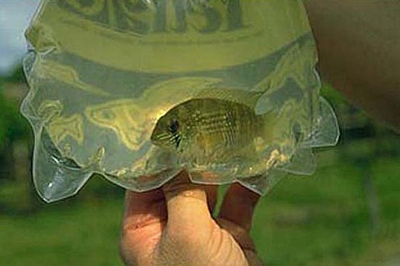 |
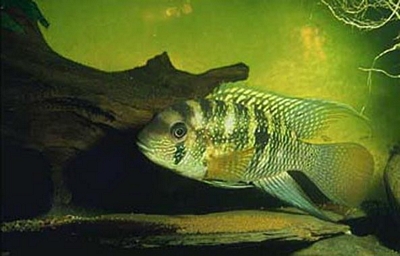 ABOVE: (If you like to look at an adult female Aequidens latifrons in aquarium with eggs).
ABOVE: (If you like to look at an adult female Aequidens latifrons in aquarium with eggs). |
The water temperature was 26.5°C, pH 6.5, dH 0, kH 2, nitrite 0, microsiemens was 16 and the air temperature was 28°C. We did not drive very far before we made a stop again, this time it was a very small pond filled with leaves. I looked into it, and found it was filled with Emperor Tetras. I just had to get into that water. Oh, what a sight. I collected a couple of Aequidens latifrons and, of course, Emperor Tetras.
We continued on to Las Animas where there was a road going out to Tado. Then we were about 57 kilometers from Quibdo. We turned left and got into a military checkpoint, we got through that one without delays.
Tado is laying on the bank of Rio San Juan, and this was the place mentioned as the collecting place for Geophagus pellegrini. The Rio San Juan was rather muddy at that time and the current was strong, so we did not go into the river. We turned the car and started on the road back to Tado. There we turned left and did not stop before we came to Istmina just on sunset. We found the Hotel Orsan, which is the best place in town to stay.
Let me tell you this right away; Istmina is not a place for tourists, it's a slum. It is one of the places in Colombia where there are many poor people, most of them are black. Most of the people are very friendly and helpful despite their poorness. Also in the Hotel Orsan, there is a "restaurant" where you can buy your meals.
Photo of the houses laying in the "main street" of Istmina, taken from the back. |
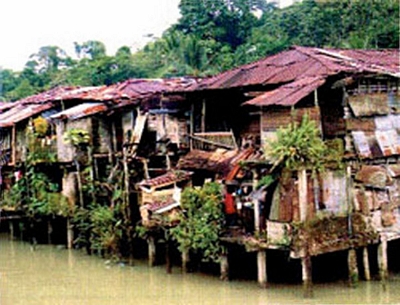 |
Well the day after, we decided to go south of the city, crossing the bridge over Rio San Juan we headed toward the small town of Condoto on the bank of the Rio Condoto.
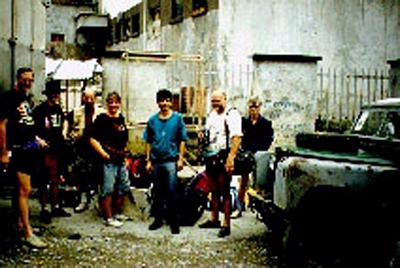 |
After breakfast we were ready to go south of Istmina. |
But we did not get that far the first day. I am not quite sure how far it was south of Istmina, but it was between 6-7 km. It was a stream with clear water, and a road across the stream. It was here in this stream I caught my very first "Geophagus" pellegrini. Guess who was very proud then?
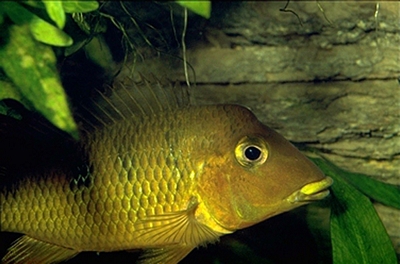
RIGHT: In this very small stream outlet, leading to the bigger one, I collected "Aequidens" biseriatus. |
In the main stream we also collected Psedeudopoecilia nigroventralis, Ancistrus sp., Emperor tetra, Rhineloricaria sp., Lebiasina sp., Rivulus sp., Pimelodella gracilis(?), "Cichlasoma" atromaculatum, Eigenmannia sp., Hoplias malabaricus(?).
I will give you the measurments of the water samples taken in 1991 and 1993. The first was taken at the beginning of March and in middle of February, 1993. Water temperature 1991 - 28.5°C, in 1993 it was 24.2°C. Air temperature in the morning was 29°C and at 3 pm it was 37°C.
pH 7 in '91 and pH 6 in '93.
dH 1 in '91 and dH 0 in '93
kH 2 in '91 and kH 0 in '93
Nitrite in 1991 was 0 and was not taken in 1993.
Even when there are slight differences in the measurements taken from 1991 till 1993, I don't think the differences are big if you take the measurement through a whole year. Choco has heavy rain the year round and if my information is right, Choco comes in second place after Hawaii for rainfall. The good thing was that most of the rain comes in the afternoon and the sun was shining all day long.
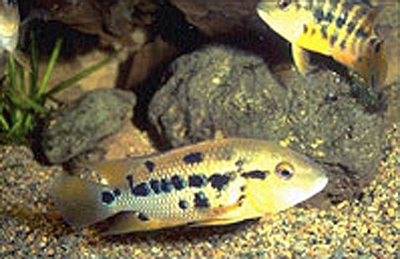 |
"Cichlasoma" atromaculatum later in the aquarium. The male in front, female at the back. |
The day after, we wanted to go further south to Condoto and Rio Condoto. Rio Condoto was very muddy and for those of us who wanted to dive, we could not see anything. So we went further, past the small "airport" there and about 300 meters further on we came to a biotope that I also visited in 1991. The water in 1991 was not very clear, so we went back to Istmina. But in 1993 the water was rather clear and we decided to jump in.
We collected Aequidens latifrons, a tetra that reminded me of Moenkhausia sancta-filomenae and the Yellow Tetra. But, the most exciting thing with this biotope was that there were aquarium plants there. It was Red Cabomba "piuahyensis"(?) and Echornia diversifolia.
We decided that we wanted to go more west of Istmina (see map). We were passing a place called Pie de Pepe and Rio Pepe, but wanted to go further west. It took us about one hour to get to a place called Curundo. The road was not very good so it was not possible to go very far from Pie de Pepe. It was a very small place but I wanted to look into the stream. This stream was not as good-looking as Rio Pepe. It smells of pigs from the water because they were bathing a little higher up. But a true aquarist goes through fire and water to seek new fishes, and the only fish I managed to collect in this muddy water was a livebearer, Pseudopoecilia chocoensis.
Well we turned the car around, because if we wanted to go out to Rio Baudo it would take us another two hours and then the day would be gone. We wanted to catch more fish. When we came back to Pie de Pepe we carried all our collecting gear down to the riverbank.
Another day another place, and this morning we wanted to go back on the "main road" to Quibdo to a place called Panamericana, it's a little further than Las Animas (see the map). The road going west is called the Pan American Highway (I wonder why they call it High Way). It will take many, many years before this road will be finished, and much, much longer before it will be "a High WAY". We drove the road as far as we could, and we ended up at a bulldozer and had to turn around.
The reason for that was that this road begins up in the hills and there are no rivers there, so we did not stop before we came down to Rio Tirado (I think), see the map again. We decided to use the large net and block the river and then start splashing in the water toward the net.
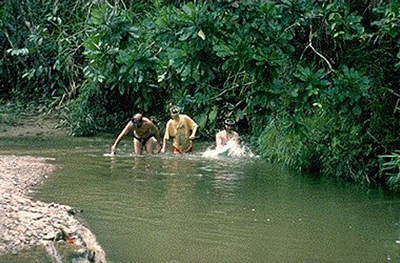 |
Here we are splashing the water to scare the fish into the net. |
Well it works, we collected "Geophagus" pellegrini and three different unknown Tetras, Emperor Tetra, Rhineloricaris sp. I also saw a cichlid that I could not tell what it was, it might have been "Cichlasoma" atromaculatum.
Water temperature in Rio Tirado was 24.9°C and air temperature was 28.3°C. pH was 5-5.2 - dH 0 - kH 0 and nitrite 0.1.
We continued on our way back to the "main road" to the crossing in the small town Panamericana. But we made several stopovers at small clearwater rivers/streams, before we came that far. The last place we stopped had clear water and a very nice pond below the bridge. We went into the water to check and I saw the largest "Geophagus" pellegrini I ever had seen. So we decided to use the net.
A large male "Geophagus" pellegrini. |
By using the net we managed to collect the largest male there and he is now in the collection at Natural History Museum in Stockhom, Sweden. There was of course Emperor Tetras, "Aequidens" biseriatus and several unknown tetras, but our concentration was directed to "Geophagus" pellegrini.
Water temperature was 25.5°C and the air temperature was 31.7°C. ph 7 - dH 0 - kH 0 and 170 metres above sea level.
Now the time had come to think of our return back from Choco. So the day after, we drove back to Quibdo and Hotel Christo Rey. We stayed a couple of days before we went back to Bogota and then a new place. The small biotope I wanted to visit was a place I found in 1991, but none of the others (a couple of the guys were with me 1991 too) thought I would be able to find the place again. But I believed I could, and I did.
The place is on the road to Guayabal about 5 km north-north-west of Quibdo. See the map, it's on the short road north of Quibdo. The biotope is only a very small stream on the right side of the road when you are driving from Quibdo (about 5 km). We passed Rio Uvata (not on the map) and about 500 metres more. Then we stopped, and on the right side of the road we followed a small track about 50-60 metres and then climbed down the hill from the right side of the track. Down in the bushes was the very small stream. So the boys lost the bet; they had to pay for the beer in the evening. We collected Rivulus paseficus, Emperor Tetra, Lebiasina sp., Pseudopoecilia nigroventralis and some freshwater crabs.
The water temperature was 24.1°C and air temperature was 28.1°C. pH 6 - dH 0 - kH 0, nitrite 0.1 mg/l and it was 110 metres above sea level.
Well this was the end of Choco for now, but I have plans to go out there again, so I hope you enjoy this article and please send me a mail and tell me what you think. If you liked it, I might write more.
Cichlid Power
Alf
 |
 |
 |
DISCLAIMER: Statements made on this page are not herewith made available for the purpose of zoological nomenclature
under the International Code of Zoological Nomenclature.
Copyright 1995- Alf Stalsberg – Cichlid Power
